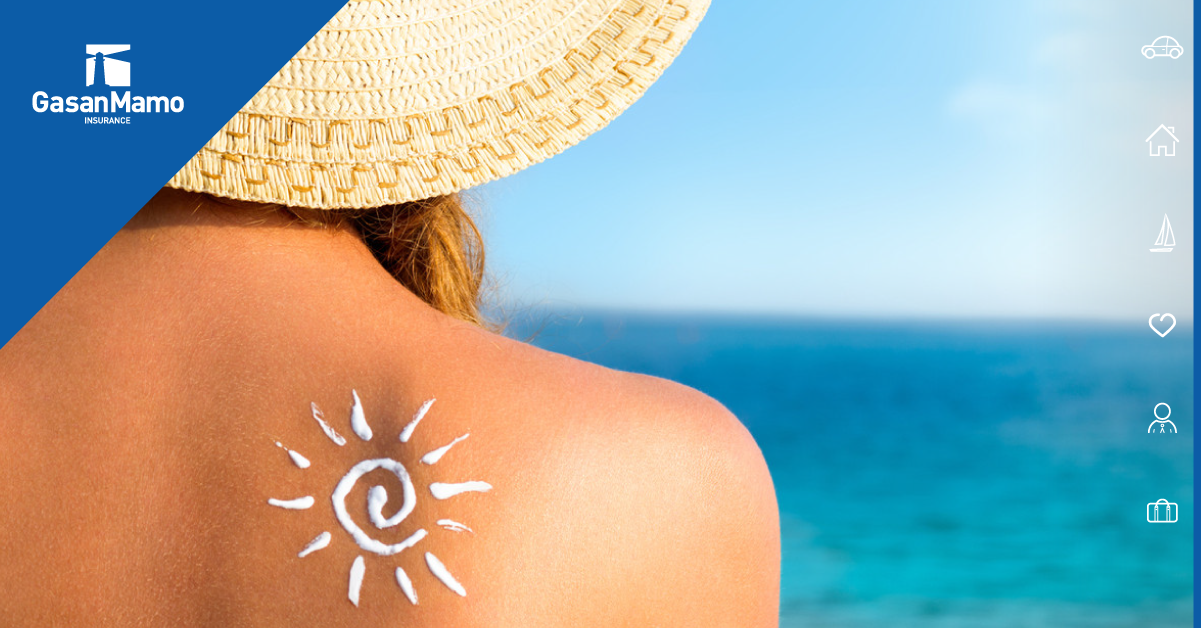
Melanoma has increased dramatically over the past few decades and can be one of the most rapidly spreading cancers. It is totally curable by simple surgery if caught early, and has poor response to treatment if diagnosed at a late stage.
Genetic factors are the most important of the known risk factors, including the familial tendency to develop melanoma, and moles often with irregular pigmentation and outline.
Overexposure to ultraviolet radiation in sunlight is believed to be a contributing factor to most (but not all) cases of melanoma; short periods of intense exposure, such as sunbathing are associated with a 2-fold increase in melanoma risk. “The advent of cheap package holidays in the 1970s has led to a ‘generational shift’ in the rates of deadly skin cancer, i.e. melanoma.”
Statistics indicate that “people now in their 60s and 70s are more than five times more likely to be diagnosed with malignant melanoma than their parents were.” “The 1970s was also the first-time sunbeds arrived in the UK, and the rising rate of melanoma cases “threatens to get worse as teenagers continue to crave a tan on the beach and top it up cheaply on sunbeds.”
“Cancer Research UK predicts that by 2024, rates of malignant melanoma in people aged 60 to 79 will rise by a third.” Overall, “UK death rates” from melanoma “have more than doubled from 1.2 per 100,000 in 1971 to 2.6 per 100,000 in 2007.”
New UK laws introduced in 2010 now mean that under-18s are banned from using sunbeds in tanning salons, gyms and leisure centres.
Outcome
When melanoma is detected at its early stage, surgical removal cures the disease in most cases. If the disease has spread to lymph nodes, the 5-year survival rate is 30-40%. If the disease has spread to distant organs (liver, bones, brain, etc.) the 5-year survival rate is 12%.
Thus, the challenge is to prevent Melanoma where possible and to catch it early should it occur. Early diagnosis is crucial since thin (superficial) melanomas have hugely better outcomes.
Prevention
Information campaigns about the danger of sunlight and sun protection should be started in childhood as part of a general health module. Appropriate sun avoidance must be emphasised, together with an explanation that even the best sun protection cream does not ensure adequate protection in the early afternoon. Outdoor workers should be entitled to protective clothing and sun protection.
The education campaigns need regular re-assessment and the outcome of those it is aimed at is evaluated scientifically.
Routine skin self-examination (SSE) has the potential to increase the chances of early detection and treatment and may be the key to melanoma survival. Attempts to increase improve the lay public’s perceptions of the early signs of melanoma have proved effective, while those aimed at increasing the accuracy of SSE with targeted interventions have been only moderately successful.
Self-examination should be directed to the entire body and not only to sun-exposed areas since melanoma can arise Anywhere on the body. Any recent change in a pigmented mole, even in a small one, must be treated as an emergency and expert opinion sought immediately. Early removal can save a life.
The high-risk groups merit greater attention in screening campaigns
Who is at high risk?
- (1) there is a personal / family history of melanoma, a history of melanoma in first-degree blood relatives (e.g., a parent, child or sibling) confers an 8-fold increased risk for developing melanoma;
- (2) when there are numerous dysplastic (atypical) nevi (unusual-looking benign (noncancerous) moles, also known as dysplastic nevi);
- (3) when the skin is light-coloured and heavily freckled due to excessive sun exposure and/or ultraviolet radiation from sunlamps and sunbeds.
These persons should see a dermatologist annually, do self-examination with the aid of photographs and an observer for the back, for at least 6 months, and have easy access to a dermatologist.
In addition, Computer-vision systems can facilitate early detection of small melanomas and may limit the number of biopsies to rule out melanoma performed on benign lesions. The identification and diagnosis of early melanoma will reduce unnecessary operations and may be important in reducing mortality from melanoma and impacting cost savings to the health system
Current situation:
- Melanoma is increasing
- Sun Damage awareness is very low
- No Vaccine is available yet
- Successful treatment is available only if caught at early stages.
It is imperative to apply the best clinical and ancillary diagnostic methods where prevalence is expected to be highest.
A one-time total-body skin exam to hunt for melanoma in patients who are older than 50 is as cost-effective as other widely accepted cancer screenings such as mammograms and Pap smears (Pap test checks for cervical cancer – referred to as Pap Smears).
Most of these deaths are from cutaneous melanomas that are visible and can be excised in time to save the patient’s life, when smaller than 6 mm.
Prof Joseph Pace MD FRCP (Edin) FRCP (Lond) FAAD FCPP KM
Consultant Dermatologist
Embrace sun-safe practices, such as wearing sunscreen, and protective clothing, and seeking shade during peak hours, to enjoy the outdoors responsibly.
Our comprehensive health insurance provides the support you need to access top-notch medical care and dermatological screenings. Let GasanMamo Insurance be your partner in protecting your skin health, ensuring you can enjoy life under the sun with confidence and peace of mind.